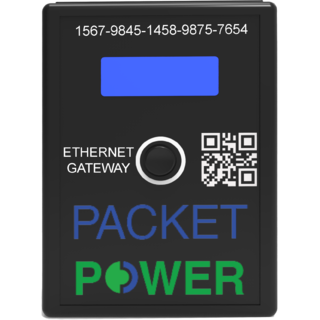Ethernet Gateways provide access to the readings captured by Packet Power’s wireless monitoring devices. Every location with a monitoring network needs at least one Gateway, and as the size of your network grows Gateways can be added to maintain suitable network performance. Gateways also handle the protocol conversion needed to put monitoring data into standard formats used by BMS and DCIM systems.
More information Manufacturer's Website
Fill out my online form.
The easy to use Wufoo form builder helps you make forms easy, fast, and fun.
| Communications | Environmental & Mechanical |
|---|---|
| Operating frequency: 860 to 930 MHz and 2.4 GHz (frequency used varies by region) | Operating temperature: 0° to 40°C (32° to 104°F) |
| Wireless network protocol: Frequency hopping self-configuring load-balancing mesh | Operating humidity: 10% to 90% non-condensing |
| Wired Network protocol: Ethernet with SNMP and Modbus TCP/IP optional | Environmental rating: Indoor use / NEMA 1 |
| Firmware updates: Wireless | Gateway Size: Dimensions: 76mm x 94mm x 31mm; Weight: 136g (4.8 oz) |
| Typical transmission range: 10 to 30 meters indoors between any two devices in mesh network | Placement: Top of server cabinet, under cable raceway, under raised floor |
| Antenna: Fully enclosed, fixed configuration | Mounting Options: DIN rail, screw, cable tie |
| Monitoring unit to gateway ratio: Up to 150 monitoring units per gateway | External Power Supply: 100 to 240V AC input; 50/60 Hz (5V DC) output |
| Multi-site support: Yes | Plug Types: C14, NEMA 5-15, CEE-7 Schuko, AS/NZS 3112 2000, BS 1363A, BS 546A, China CPCS-CCC |
| Encryption: AES 128-bit | Power Consumption: 3W |
| Compatible Devices: All Packet Power monitoring units | Power over Ethernet: Available, requires an external PoE splitter |
| Local Display: LCD for status and configuration; LED for general device status | Certifications: FCC, IC, CE; consult Packet Power for additional certifications |
Brochures
Manuals
Technical Specs
Resources
 view product gallery
view product gallery